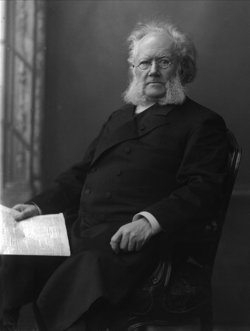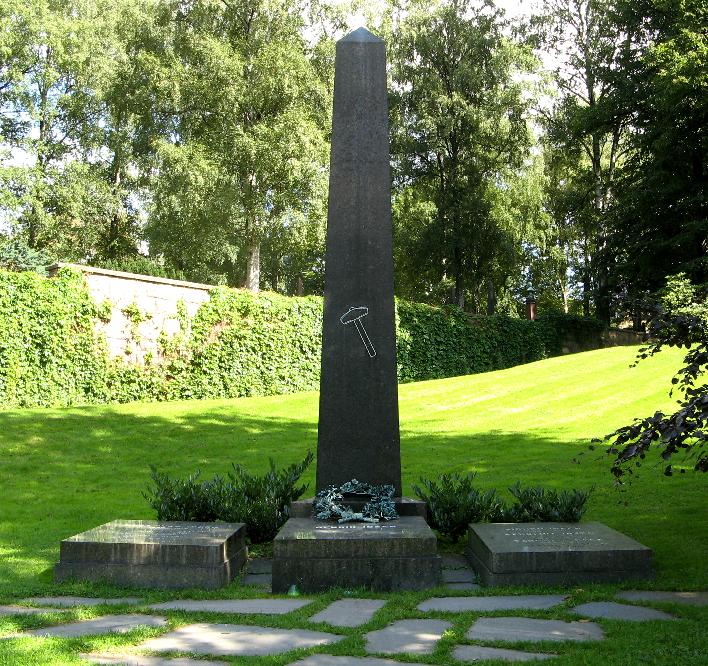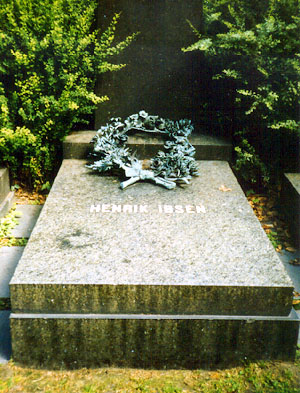Playwright. Born in Skien, Norway, he was the eldest of the five children of Marichen Cornelia Martine Altenburg and merchant Knud Ibsen. Both his parents were part of the close-knit extended family of the siblings Ole Paus and Hedevig Paus, and descended from the regional elites of Skien and Upper Telemark. Although his father's business activities started to suffer in the mid 1830s, Ibsen grew up in comfortable circumstances as part of Skien's social elite, that he himself referred to as patricians, according to Ibsen scholar Jørgen Haave's book Familien Ibsen. At 15, he chose to become an apprentice apothecary, but eventually abandoned this career. In 1849, he wrote his first play, "Catilina." The following year, he went to Christiania (present day Oslo), to study for university entrance examinations, instead, he was offered a job as a writer and manager for the Norwegian Theatre in Bergen, he would spend the next seven years there. After returning to Christiania in 1857, he was given management of another theatre and at the same time wrote "Love's Comedy" by 1862. That same year, he left Norway and settled in Italy where he wrote the tragedy "Brand." In 1866, he followed with one of his most recognized plays, "Peer Gynt." A move to Germany in 1868, saw the creation of "The Pillars of Society," which was first performed in Munich. It was in Munich in 1879, that he wrote what is perhaps his most noted work, "A Doll's House." He returned to Italy about this time and settled in Rome, where he wrote "Ghosts" in 1881. The subject matter horrified audiences of the day. He completed the last of his plays abroad, "Hedda Gabler," in 1890. In 1891, he returned to Norway a internationally recognized playwright. Among his later plays were "The Master Builder" in 1892; "Little Eyolf " in 1894; and "When We Dead Awaken" in 1899. In 1900 he suffered a series of strokes that left him bedridden and unable write. He died after several years as an invalid at age 78, and was given a state funeral by the Norwegian government. He is interred in the "honorary section" of Vår Frelsers gravlund (Our Savior's Cemetery). His uncle Christopher Blom Paus is interred at the same cemetery, whereas his parents are interred in Skien.
Playwright. Born in Skien, Norway, he was the eldest of the five children of Marichen Cornelia Martine Altenburg and merchant Knud Ibsen. Both his parents were part of the close-knit extended family of the siblings Ole Paus and Hedevig Paus, and descended from the regional elites of Skien and Upper Telemark. Although his father's business activities started to suffer in the mid 1830s, Ibsen grew up in comfortable circumstances as part of Skien's social elite, that he himself referred to as patricians, according to Ibsen scholar Jørgen Haave's book Familien Ibsen. At 15, he chose to become an apprentice apothecary, but eventually abandoned this career. In 1849, he wrote his first play, "Catilina." The following year, he went to Christiania (present day Oslo), to study for university entrance examinations, instead, he was offered a job as a writer and manager for the Norwegian Theatre in Bergen, he would spend the next seven years there. After returning to Christiania in 1857, he was given management of another theatre and at the same time wrote "Love's Comedy" by 1862. That same year, he left Norway and settled in Italy where he wrote the tragedy "Brand." In 1866, he followed with one of his most recognized plays, "Peer Gynt." A move to Germany in 1868, saw the creation of "The Pillars of Society," which was first performed in Munich. It was in Munich in 1879, that he wrote what is perhaps his most noted work, "A Doll's House." He returned to Italy about this time and settled in Rome, where he wrote "Ghosts" in 1881. The subject matter horrified audiences of the day. He completed the last of his plays abroad, "Hedda Gabler," in 1890. In 1891, he returned to Norway a internationally recognized playwright. Among his later plays were "The Master Builder" in 1892; "Little Eyolf " in 1894; and "When We Dead Awaken" in 1899. In 1900 he suffered a series of strokes that left him bedridden and unable write. He died after several years as an invalid at age 78, and was given a state funeral by the Norwegian government. He is interred in the "honorary section" of Vår Frelsers gravlund (Our Savior's Cemetery). His uncle Christopher Blom Paus is interred at the same cemetery, whereas his parents are interred in Skien.
Bio by: Iola
Family Members
Advertisement
See more Ibsen memorials in:
Records on Ancestry
Sponsored by Ancestry
Advertisement









